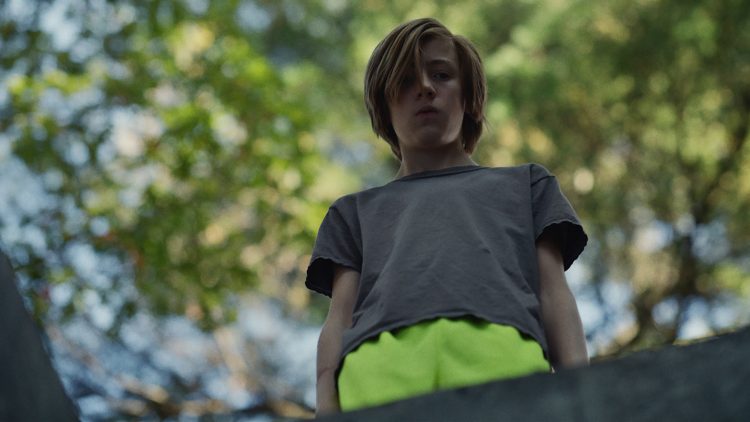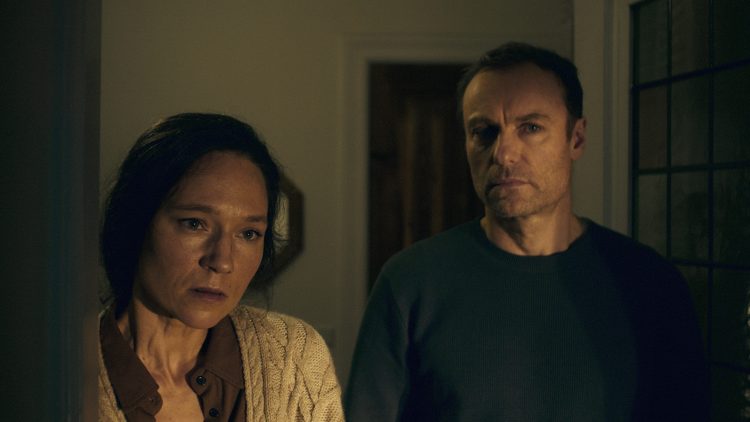What are the limits of the traditional (white) nuclear family? By pure coincidence, two films from Sundance this year investigated the breakdown of the nuclear family in ways that seemed to reflect the increasingly fractured socio-cultural dynamics of life in the 21st century. Is the nuclear family in crisis? It’s hard to tell. But in American indie “John and the Hole” and German/Italian/Danish “Human Factors,” these two families seem bound to buckle under the pressure of their own illusions.

In “John and the Hole”, director Pascual Sisto and writer Nicolás Giacobone adapt Giacobone’s 2010 short-story about an adolescent boy who decides to hold his parents, and older sister, captive in a bunker-hole in the family’s backyard. The catalyst for John’s decision is not clear. There is no inciting moment, really. As the family remains trapped, John occasionally delivers food while performing a perverse version of adulthood above ground. By situating John as the perspective from which the film emanates, Giacobone’s script might suggest something of a character study. Except, despite being filtered through his perspective, little in “John and the Hole” seeks to engage within any decisive investigation of its protagonist. Despite the film’s placement as a coming-of-age drama, John’s level of self-awareness is limited.
Thirteen-year-old Charlie Shotwell, who is on screen for most of the film’s run-time, carries the inscrutability of John on his shoulders. And it’s a well-modulated performance, even if it’s in a film that does not seem to be going anywhere. If “John and the Hole” is to subsist as an investigation of family life, the family dynamics need to be better established. Shotwell is supported by an excellent cast, with Michael C. Hall, Jennifer Ehle and Taissa Farmiga as his increasingly baffled family-members, but the film’s perspective on who they are is too indistinct to register.
There’s a lot of formalist negotiations in the film’s aesthetics. Paul Özgür’s 4×3 cinematography does some interesting things with distance and perspective and Jacqueline Abrahams’ production design effectively mines the middle-class coldness of the family. But what is this in support of? What does the film have to say about anything? It’s hard to discern what “John and the Hole” really wants to communicate to its audience. Could it be a summation on the beginnings of sociopathy? A beginning perspective at how (white) male privilege comes to show itself? An indictment of suburban malaise? It could be all of those things. And it could be none of those things, which evinces the film’s own inability to establish its own stakes. Before a film works as an allegory for something larger, it needs to work on its own terms. But the centre of “John and the Hole” feels too hollow to engage with.

“Human Factors” fares better by offering an actual perspective into its cracking family. Ronny Trocker, who writes and directs, presents the film as a family grappling with an invasion gone wrong. Except, “Human Factors” is not quite an invasion thriller, even as the film’s aesthetics play around with this genre for some key moments. As we watch Nina and Jan try to navigate their family’s response to the invasion, the film builds. Beyond genre, there’s an investment in each member of the quartet family unit as singular features and that bodes well for this kind of something-is-not-quite-right drama. “Human Factors” is incredibly astute at building mood. There’s an atmospheric wrongness that’s signalled to us even before the story establishes how or why that wrongness pervades. Something is wrong with this family. Is the wrongness specific to them? Or is something larger amiss?
The answers to these questions provide compelling moments since “Human Factors” does not present the investigation as a mystery to be solved, but instead saunters into the perspective of the entire family – mother, father, teenage daughter and preadolescent son – as they each negotiate their own space in the family. When a gay couple arrives in the form of Nina’s brother and a partner, the film seems to be holding up the different ideas of partnership in ways that feel too specific not to unpack. It’s that sharp kind of awareness of how the nuclear family interacts with the world within and without of its perspective that makes “Human Factors” feel so incredibly thought out.
Trocker is incredibly thoughtful about family dynamics and about the things that we fear, but the film is also intelligent enough about things beyond its interest in this specific family’s dynamics. A workplace argument between the main couple features an excellent scene of blocking. Sabine Timoteo gives the film’s best performance as Nina, and shines opposite Mark Waschke’s icy Jan. Their scenes together poke at the limits of marriage with an emotional intelligence that feels well-earned and grateful. Klemens Hufnagl’s cinematography might be Trocker’s best asset in building tension as the camera moves from accessory to aggressor, illuminating things the characters would prefer to ignore.
“Human Factors” is unnerving, but not for any concerted effort to be perverse. Instead, the steady build-up of its drama takes its time to put us in the headspace of these specific people and their ideologies. If there is any subtext to take from Human Factors, and the film is too intentional in its moments not to be, they are peripheral to the surety of the text itself. A discussion on masculinity? Anxieties about foreignness? The danger of progress? Titbits poke out, and any number is possible but by explicating its focus on the textual elements “Human Factors” speaks to a larger world with thoughtful vigour.
“Human Factors” premiered at Sundance Film Festival 2021 as part of the World Cinema Dramatic Competition. “John and the Hole” premiere at Sundance Film Festival as part of the U.S. Dramatic Competition.





